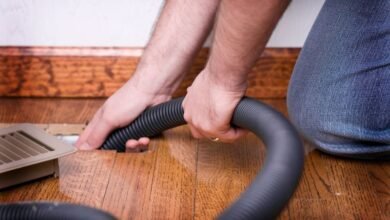
Power Wheels Safety Tips: What Every Parent Needs to Know Before Buying
Power Wheels and similar ride-on electric vehicles offer kids a thrilling way to explore their world, providing fun and adventure while building confidence and coordination. However, as enjoyable as these toys can be, they also come with some safety risks if not used and maintained correctly. As a parent, understanding these potential hazards and implementing essential safety measures will ensure that your child’s experience with Power Wheels is both safe and enjoyable. Here’s a comprehensive guide on what to consider before buying a Power Wheel and how to keep safety a top priority.
1. Understand Age and Weight Guidelines
Before purchasing Power Wheels, check the manufacturer’s recommendations for age and weight. Power Wheels are designed for specific age ranges, typically 2-7 years, with weight limits that ensure safe handling and durability. Exceeding these guidelines can lead to safety risks, such as tipping or difficulty controlling the vehicle. For younger children, slower models with basic features are ideal, while older kids may be ready for models with slightly higher speeds and more controls. Adhering to age and weight limits provides a safer, more enjoyable experience for your child.
2. Check Speed Options and Controls
Power Wheels come with different speed settings, often ranging from 2 to 5 mph. Some models allow parents to lock the higher-speed option, which is beneficial for younger or beginner riders. If you’re buying for a first-time driver, consider starting with models that offer slower speed capabilities or have a remote control feature for parental guidance. Gradual speed increases provide a safer learning curve and help your child build confidence and control in a secure manner.
3. Battery Safety
Battery safety is one of the most critical aspects of using Power Wheels. Most Power Wheels are powered by rechargeable 6V, 12V, or 24V batteries, which need proper handling to avoid potential hazards.
Tips for Battery Safety
- Use the Manufacturer’s Charger: Only use the charger provided by the manufacturer. Using alternative chargers may result in overheating, which can damage the battery or even cause fires.
- Avoid Overcharging: Follow the recommended charging time and avoid overcharging, which can shorten battery life and increase safety risks.
- Store Batteries Correctly: During long periods of non-use, store the battery in a cool, dry place, and keep it charged periodically to maintain optimal battery health.
- Check for Damage: Inspect the battery and connections regularly. If you notice leaks, corrosion, or damage, replace the battery promptly.
4. Wear Proper Protective Gear
Although Power Wheels don’t reach high speeds, it’s essential to equip your child with appropriate protective gear to prevent injuries. Some basic protective equipment to consider includes:
- Helmets: A well-fitted helmet should always be worn to protect your child’s head from potential falls or bumps.
- Elbow and Knee Pads: These add an extra layer of safety, especially if your child is new to ride-on vehicles.
- Closed-Toe Shoes: Sneakers or closed-toe shoes help protect their feet and provide better grip on the vehicle pedals.
Having your child wear the right protective gear is a proactive step in ensuring their safety during play.
5. Parental Supervision and Boundary Setting
Supervision is a key factor in keeping children safe while they enjoy their Power Wheels. Always keep an eye on your child, especially in open or public areas, and establish boundaries to limit where they can ride. For instance:
- Avoid Busy Areas: Don’t allow your child to ride near streets or parking lots where traffic is present.
- Designate a Riding Zone: Create a designated space for riding, like a backyard or a quiet driveway. This helps contain your child’s play area and makes supervision easier.
- Set Speed Limits: If the vehicle has adjustable speeds, limit it to a slower speed when in small or crowded spaces.
6. Regular Maintenance Checks
Regular maintenance is essential for Power Wheels safety. By checking for wear and tear, you can prevent mechanical failures that might lead to accidents. Here are a few maintenance practices to follow:
- Inspect the Tires: Worn-out or damaged tires can affect the vehicle’s stability. If your child’s Power Wheel has rubber tires, check the tread regularly.
- Check the Steering and Brakes: Ensure that the steering mechanism is responsive and the brakes function correctly. A delay in steering or braking can result in accidents.
- Tighten Screws and Bolts: Vibrations from use can loosen screws over time. Periodically inspect the vehicle for loose screws or bolts and tighten them as needed.
7. Set Up a Safe Driving Environment
The environment in which your child rides their Power Wheel greatly impacts their safety. Avoid areas with uneven surfaces, steep inclines, or obstacles that could lead to tipping or loss of control. Some additional factors to consider include:
- Choose a Flat Surface: Smooth, flat surfaces like grass, concrete, or driveways are ideal.
- Avoid Water and Sand: Riding in water or sandy areas can damage the vehicle’s battery and motor and may also increase slipping risks.
- Clear Obstacles: Remove objects like rocks, sticks, and toys from the riding area to minimize the chances of your child tipping or getting stuck.
Creating a safe environment enhances both the performance of the vehicle and the safety of the rider.
8. Teach and Model Safe Driving
Children learn by observing and imitating, so modeling safe driving behavior can positively influence their habits. Take some time to explain basic driving rules and demonstrate how to follow them:
- Teach Traffic Awareness: Encourage your child to look around before moving, even if they’re in a controlled environment.
- Show Proper Steering and Braking: Demonstrate how to gently steer and brake to avoid sudden jerks.
- Encourage Safe Speeds: Let them know that speeding can be dangerous and reinforce that slower is safer.
Instilling these principles early on helps children develop responsible habits for using their Power Wheels and, later, for driving real vehicles.
9. Weather Considerations
Adverse weather conditions can make Power Wheels play dangerous, so it’s essential to plan according to the weather. Here’s what to keep in mind:
- Avoid Wet Conditions: Riding on wet surfaces increases the risk of slipping and can damage electrical components.
- Extreme Temperatures: Both extreme cold and hot temperatures can affect battery performance. Extreme cold may reduce battery efficiency, while high temperatures can cause overheating. Keep Power Wheels indoors or under a shaded area to prevent exposure to harsh weather.
- Windy Days: Strong winds can make it difficult for your child to control the vehicle and may lead to unexpected debris in their path.
Monitoring the weather forecast and adjusting playtime accordingly helps to keep your child safe.
10. Conclusion
Power Wheels provide a fantastic opportunity for children to experience the thrill of driving while building coordination and motor skills. By understanding the potential risks and implementing these safety tips, parents can create a safe environment for their children to explore. Remember to check age and weight guidelines, regulate speed, ensure battery safety, equip your child with protective gear, and supervise at all times. With these safety measures in place, your child can enjoy their Power Wheels adventure while you have peace of mind.
Enjoy the fun and excitement that Power Wheels bring, knowing that you’re well-prepared to keep your child safe!
Taking the time to follow these safety precautions will make a world of difference in ensuring your child’s Power Wheels experience is safe, memorable, and full of joy.




